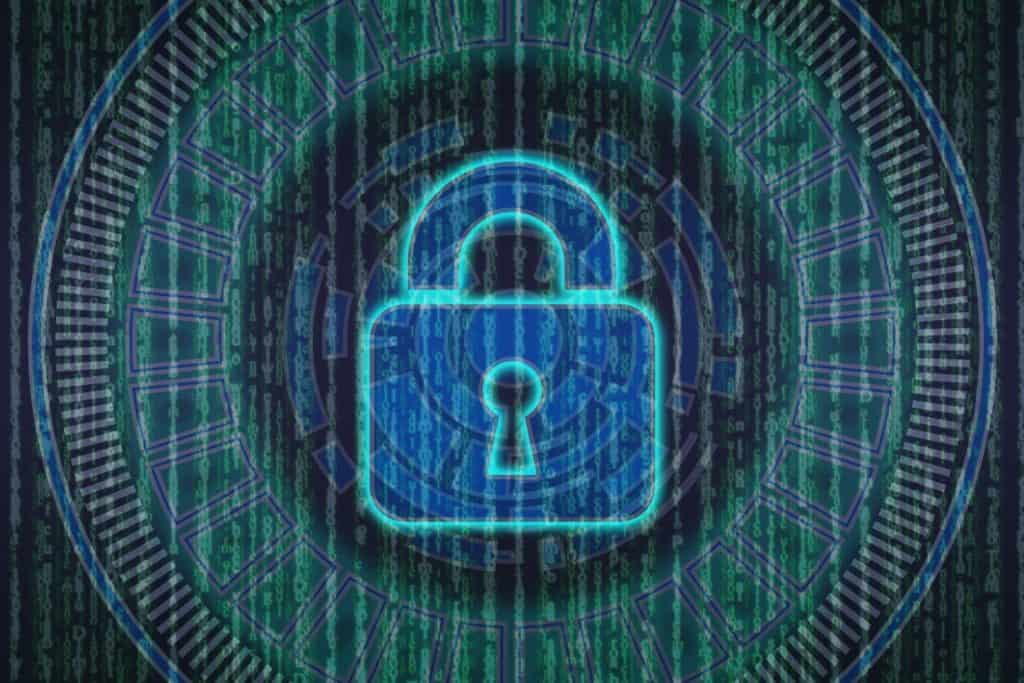10 months ago
How to Keep your Digital Assets in Safety?

In the vast and ever-expanding realm of the digital age, where ones and zeros weave the fabric of our modern lives, a new kind of treasure is forged: digital assets. These intangible gems, ranging from cherished family photos to cryptocurrencies worth a fortune, have become the modern-day heirlooms of our increasingly interconnected world.
Yet, as we amass this wealth of digital riches, the question looms like a digital shadow: How do we keep our digital assets safe in an era where virtual pirates and data storms threaten to plunder our treasures at any moment?
Join us on a journey beyond the confines of physical safes and vaults as we unravel the secrets of safeguarding your digital wealth in the uncharted territories of the online realm. In this blog post, we will navigate the digital seas, fortify our virtual fortresses, and ensure your digital legacy endures for future generations.
Effective Password Management
Implementing unique passwords is the first line of defense to protect digital assets. Regarding subsequent tips:
- Create a complex password: Use upper and lower-case letters, numbers, and characters.
- Avoid common phrases or personal information: Avoid using easily guessable information, such as birthdays or pet names.
- Regularly update passwords: Change passwords periodically to prevent unauthorized access.
- Implement 2FA: Enable an additional layer of security by requiring a second form of verification, such as a code sent to your mobile device.
- Utilize password managers: These tools securely store your passwords and automatically generate complex, unique passwords for each account.
Data Encryption Techniques
So, how can you protect your digital property? In the labyrinthine landscape of cyberspace, where information flows like an invisible river, the data guardians have donned the armor of encryption to protect their most precious secrets. Data encryption techniques serve as the modern-day enigma, ensuring that even the most sophisticated digital adversaries cannot breach the sanctity of our information.
- Symmetric Encryption: Picture a lock and key, where the same key used to lock a treasure chest is also used to unlock it. Symmetric encryption employs a single secret key to both encrypt and decrypt data.
- Asymmetric Encryption: It's akin to sending a padlock with no the key, ensuring that only the intended recipient, who holds the private key, can unlock the data. Asymmetric encryption is the bedrock of secure online communications.
- Hash Functions: Imagine a digital fingerprint for your data. Hash functions transform data into a fixed-size string of characters, making it nearly impossible to reverse-engineer the original data from the hash. These fingerprints are used to verify data integrity, like ensuring a file you downloaded is identical to the one the sender intended.
- AES (Advanced Encryption Standard): AES is a symmetric encryption algorithm widely adopted for securing data. It employs block ciphers, breaking data into fixed-size blocks and encrypting each block separately. AES has become the gold standard for encrypting data at rest, securing everything from your phone's storage to sensitive government documents.
- TLS/SSL Encryption: Ever notice the little padlock in your web browser's address bar? That's TLS (Transport Layer Security) or its predecessor, SSL (Secure Sockets Layer), at work. They create a secure tunnel for data to travel between your device and a web server, ensuring that your online transactions and communications remain confidential.
- Homomorphic Encryption: This is like a magician who can perform tricks on a locked box without ever opening it. Homomorphic encryption allows computation on encrypted data without decrypting it first. This technique holds immense promise for privacy-preserving data analysis in fields like healthcare and finance.
- Quantum Encryption: In the realm of quantum computing, where the rules of classical encryption crumble, quantum encryption emerges as a new hope. It leverages the quirky properties of quantum particles to create uncrackable encryption keys, promising a future where data remains secure even in the face of quantum supercomputers.
As we traverse the digital landscape, these data encryption techniques stand as the stalwart guardians of our digital realms, ensuring that our information remains shielded from prying eyes and malicious intent.
Whether we're protecting our personal messages or safeguarding the secrets of nations, the language of encryption speaks to the heart of modern cybersecurity, and its secrets continue to evolve as technology advances and new threats emerge.
Regularly Update and Patch Software
The security of your digital assets relies on the crucial practice of keeping your software up to date. Within the context of digital asset protection insurance, the following emphasizes its importance:
Software Updates
Developers consistently release security patches, bug fixes, and new features to enhance their software. These updates effectively address vulnerabilities and play a vital role in safeguarding your digital assets against potential threats.
Enabling Automatic Updates
It is highly recommended to activate the automatic update feature for your operating system, antivirus software, web browsers, and other critical applications. This ensures they are constantly and seamlessly updated to the latest versions, bolstering their security capabilities.
Regular System Scans
Make it a habit to perform regular scans on your devices to detect and eliminate any malware or malicious software that may exist. This proactive measure helps you identify and eradicate potential threats, further enhancing the security of your digital assets.
By prioritizing these practices, you can optimize the security of your digital assets and minimize the risk of exploitation or compromise. Keep your software updated and regularly scan your systems to maintain a robust defense against evolving threats.
Implement Robust Backup Solutions
Backing up your digital assets is essential to ensure their safety and protect against data loss. Consider the following backup strategies:
- Cloud Backup: Utilize cloud storage solutions like Google Drive, Dropbox, or Microsoft OneDrive to store your essential files securely off-site.
- External Hard Drives: Make regular backups to external hard drives or USB flash drives and store them in a safe location.
- Automated Backup Tools: Use backup software that automatically schedules and performs backups at regular intervals.
Smart Online Practices
It is crucial to prioritize smart online habits when safeguarding your digital assets. Here are key strategies to consider:
- Practice Safe Browsing Habits: Refrain from clicking on suspicious links or downloading files from untrustworthy sources. Exercise caution when dealing with email, social media, or any online communication involving phishing attempts. Always verify the legitimacy of websites before entering personal information or engaging in online transactions.
- Ensure Security on Public Wi-Fi Networks: Public Wi-Fi networks can be vulnerable to hackers. To protect your data, follow these guidelines:
- Avoid accessing sensitive information, such as online banking or personal accounts, when connected to public Wi-Fi.
- Utilize a virtual private network (VPN) when accessing the internet on public networks. VPNs encrypt your data traffic, making it challenging for hackers to intercept and access your information.
Remember, adopting these measures will enhance the security of your digital assets and contribute to a safer online experience in an ever-evolving digital landscape.
Understanding the Role of Virtual Private Networks (VPNs)
A VPN designates a safeguarded link between your gadget and the World Wide Web. It modifies your data into an unreadable format, thus ensuring safeguard and concealment.
The advantages of utilizing a VPN encompass the following.
Camouflaging your IP address and location secures your digital identity. Reversing your internet traffic into an unreadable format makes it impregnable to the prying eyes of outsiders. Acquiring the ability to access content confined by geographical restrictions and circumventing censorship.
Conclusion
In the ever-evolving dance between data guardians and digital intruders, one thing remains crystal clear: data encryption is the unsung hero of the digital age. It's the invisible fortress that safeguards our most sensitive information, the cryptographic cloak that shields our secrets, and the guardian angel of our digital lives.
What is the most secure way to protect your digital assets? As we bid adieu to this exploration of data encryption techniques, let us remember that while technology continues to leap forward, the need for robust encryption only grows stronger. From the ancient art of symmetric encryption to the quantum promises of tomorrow, these techniques are the keystones upon which our digital world is built.
In a world where data is the lifeblood of commerce, communication, and personal connection, encryption isn't just a luxury; it's a necessity. It transcends borders, industries, and ideologies, standing as a beacon of hope that, in the face of digital storms, we can keep our information safe, our privacy intact, and our digital assets secure.
So, as you navigate the vast and intricate web of the digital realm, may these encryption techniques be your trusty companions. With their wisdom, we can stride confidently into the future, knowing that even as the landscape changes, the guardians of encryption remain steadfast in their commitment to preserving the sanctity of our data.
News
How are Cryptocurrency Hot Wallets Different from Cold Wallets
What is USDT — Tether coin meaning in cryptocurrency
How to Buy and Invest in Bitcoin
Cryptocurrency Security in 2024
Difference Between CEX and DEX in Crypto
What Is a Crypto Exchange
The Biggest Crypto Scams of All Time
Difference Between a Crypto Exchange And Broker
Accounting for Cryptocurrencies
Types of Cryptocurrency Wallets
Stay informed about the latest news on crypto
Subscribe to our newsletter.








